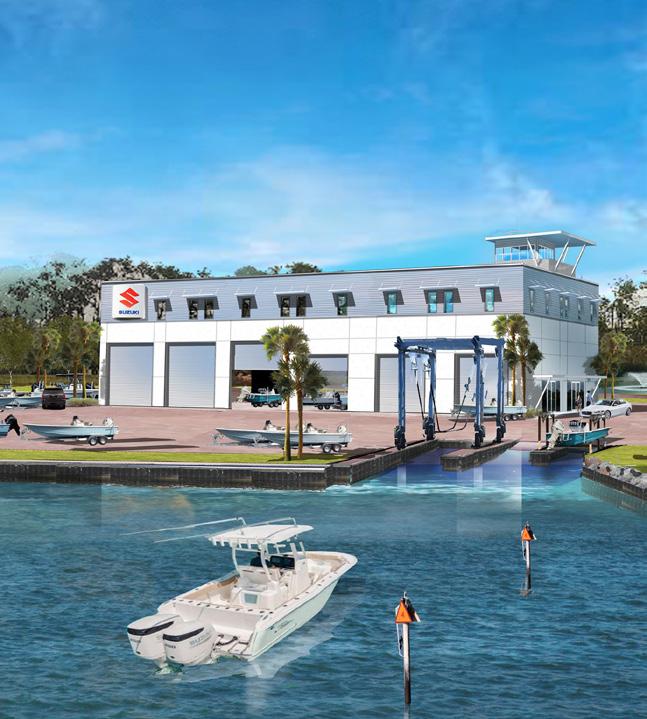
6 minute read
POLITICAL PERSPECTIVE
The Future of Bay County's Affordable Housing by: Brandi DeRuiter, VP of Governmental Affairs, Bay County Chamber of Commerce
Affordable Housing Funds
Affordable housing is often top of mind when asked of our community’s needs. These issues present themselves when incomes are not great enough to afford the ever-increasing price of housing. Housing issues, although longstanding and widespread, are increasingly complex to solve.
In 1992, the Florida legislature enacted the William E. Sadowski Act. The Sadowski Act was brilliantly designed to alleviate just that and bridge the affordable housing gap. Sadowski funds are for vulnerable populations, such as the frail elderly and persons with disabilities; first time homebuyers; and low-income persons. Unfortunately, this fund is targeted by the legislature almost annually, diverting millions to the state’s general fund. What began out of need during the recession has become routine. In the last legislative session, $125 million of the trust fund’s $332 million was transferred into general revenue, bringing the total up to around $2 billion over the last 10 years.
Federal Beginnings
Housing programs have grown and shifted based on changing economic, social, cultural, and political landscapes of the times. The programs and agencies that led to the establishment of the federal department, now known as Housing and Urban Development (HUD), began in the early 1930s with construction and finance programs meant to alleviate some of the housing hardships caused by the Great Depression.
Much of the nation’s housing stock for poor families during this era was of poor quality and dilapidated. In 1937, the U.S. Housing Act addressed housing needs of low-income people through public housing providing significant improvements in living conditions.
Unfortunately, over time, the cost of operating public housing exceeded the revenue from rents collected. Incentives for existing housing were found to be less expensive than new construction, triggering subsidies to be shifted to rental assistance, block grants and low-income housing tax credits. This shift provided state and local governments with greater access to federal resources to fund local housing and community development priorities.
Typically, local communities have better knowledge about how to provide housing, and can do so more efficiently. From the late 1980s through the 1990s, Congress acknowledged the value of local control and gave more decision-making authority over housing policy to state and local governments through the creation of block grants and tax credits.
The Brooke Amendment, enacted by Congress in 1969, set a limitation on the percentage of income a public housing resident could be expected to pay in rent. The original figure of 25% was later raised to the 30% standard that exists today.
State Beginnings and the Sadowski Fund
The Florida Housing Finance Corporation was created in 1985 and originally accessed only federal resources to finance housing. To leverage and expand programs, the Florida Legislature began appropriating funding for state programs and enacted the William E. Sadowski Act in 1992.
The Sadowski Act created a dedicated source of revenue for housing from a portion of documentary stamp taxes on the transfer of real estate. This Act provides a funding mechanism for local and state programs and a framework for local programs to operate. The 2005 Legislation placed a revenue cap of $243 million per year that may flow into the Sadowski Trust Fund, effective 2007.
The Dedicated Revenue Comes From:
A 10-cent increase to the documentary stamp tax paid on the transfer of real estate (1992).
A re-allocation of 10-cents of existing documentary stamp tax revenues from general revenue to the affordable housing trust funds (1995).
Approximately 30 percent flows into the State Housing Trust Fund and 70 percent flows into the Local Government Housing Trust Fund. Local and state programs include the State Housing Initiatives Partnership (SHIP) Program, which receives approximately two-thirds of the funding; the State Apartment Incentive Loan (SAIL) Program, which receives about 20 percent of the funding; and other programs, including the Predevelopment Loan Program (PLP), the Homeownership Assistance Program (HAP), the Affordable Housing Guarantee Program, and the Catalyst Training and Technical Assistance Program.
Florida Housing administers the bulk of affordable housing resources at the state level. All 67 counties and 52 cities administer federal and state funds for housing; 115 public housing authorities and 17 regional housing finance authorities.
Local Housing Concerns
While Bay County has made tremendous strides in its recovery after Hurricane Michael made landfall on October 10, 2018 causing widespread damage, the catastrophic devastation of the County’s housing stock will take time to remedy. Affordable housing is critical for the ongoing livelihood of displaced households. Destruction to homes has resulted in a critical housing shortage and significantly increased the cost of labor and building supplies. As a result of the storm, Bay County has experienced:
Decimated Housing Stock: Over 69 percent of residential homes and 64 percent of apartments in Bay County were damaged – half of Panama City Housing Authority’s housing is estimated to have been destroyed. Additionally, since Hurricane Michael, the prices of materials, labor and housing have increased significantly, leaving those that need help and assistance with no other option than to continue relying on emergency housing and assistance programs.
Large number of affected citizens: An estimated 5,000 Bay County citizens are still displaced, housing insecure, or homeless due to Hurricane Michael.
Anticipated disruption to school-aged children: For Bay District Schools, the continuing trauma and impact for students dealing with the after-effects of Hurricane Michael, including homelessness and housing insecurity, has required 128 children be institutionalized in the 2019 school year under Florida’s Baker Act due to posing a physical threat to themselves or others – a significant increase due to previous years directly related to the impact of Hurricane Michael.
Lack of rental properties and other housing options: The County is facing a housing crisis because of the decimated housing stock. Most, if not all, of the survivors in emergency housing cite high rent prices as the reason they cannot leave their travel trailer, mobile housing unit, or other leased unit. If rental units are available, many survivors are being denied due to prior convictions or evictions and/ or credit worthiness.
Several rental properties have yet to return online due to challenges with insurance companies, lack of contractors, or in the process of selling and not rebuilding.
As redevelopment areas are identified, Sadowski funds are needed to offset costs for private developers to assist renters/homeowners in obtaining affordable housing.
Community Benefits to Affordable Housing Programs
Communities benefit from having more homeowners. In stabilized neighborhoods, children remain in the same school year after year instead of moving from place to place. Crime is often reduced and tax bases are strengthened by improving neighborhoods.
Affordable housing is more than simply bridging the divide between the number of units we have and the number of units we need. Affordable housing is an investment providing the stability required to achieve financial independence, often serving as a critical component in breaking poverty cycles.
A Topic Of Debate
Florida Senate Bill 306 and House Bill 381 are intended to exempt the State Housing Trust Fund and the Local Government Housing Trust Fund from a provision authorizing Legislature to transfer unappropriated cash balances to the Budget Stabilization Fund and General Revenue Fund. Even with the proposed bills, Sadowski fund dollars may be diverted by Legislature.
While the Bay County Chamber endorses the Senate and House Bills made to-date, further amendments are needed to support communities who are rebuilding after catastrophic disasters.






